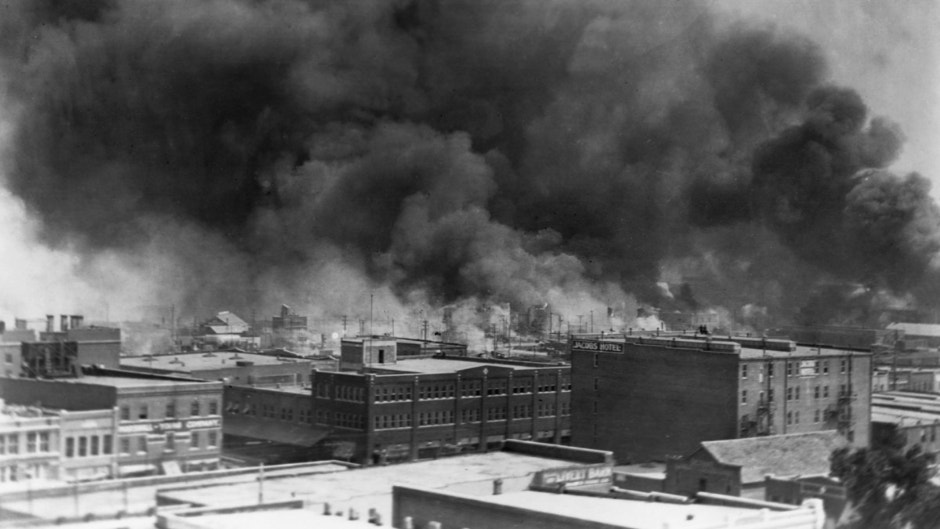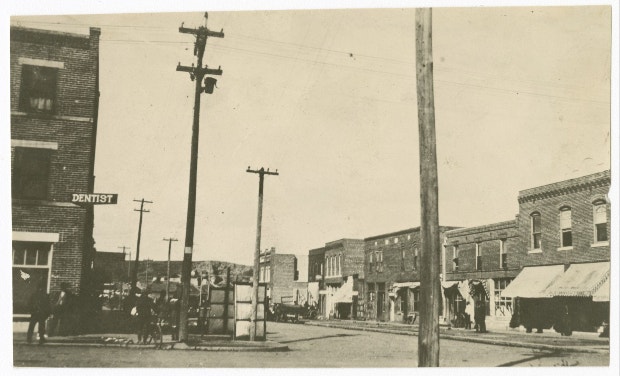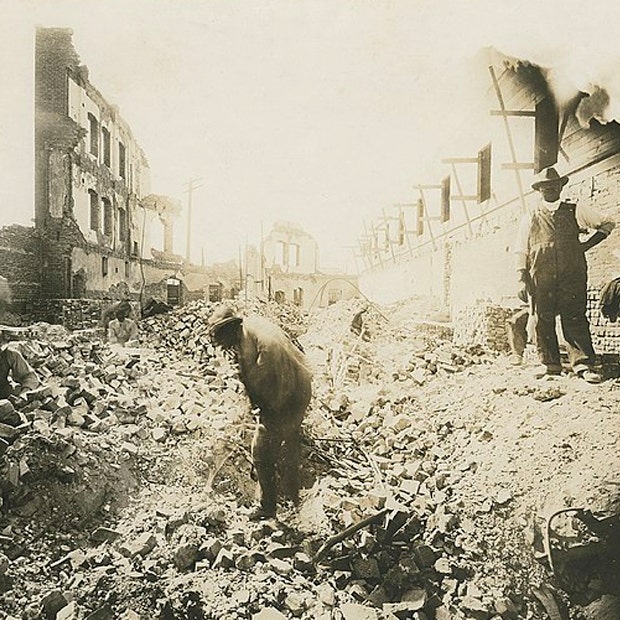Why Banning Critical Race Theory Likely Means Forgetting The Tulsa Massacre Ever Happened
If Critical Race Theory is banned, your kids won't learn about the 1921 Tulsa Massacre
 United States Library of Congress
United States Library of Congress Black Wall Street was an affluent black neighborhood located in the Greenwood district of Tulsa, Oklahoma. Greenwood was a post-Civil War neighborhood founded in 1906 by O.W. Gurley, a wealthy Black landowner. O.W. Gurley purchased 40 acres of land with the hopes of creating opportunities for his people.
Eventually, word spread like wildfire of the work being done in Tulsa and Black people began moving to Greenwood.
The American dream was finally within arm's reach for members of the Black community. As more wealthy Black men and women moved to Greenwood, businesses began to spring up. Everything they needed was located right in Greenwood.
There were restaurants, salons, barbershops, clothing stores, jewelry stores, offices for dentists, doctors, and lawyers, a bank, a hospital, a library, and many more establishments. Greenwood became self-reliant, self-contained, and the richest Black neighborhood in the nation.
Black Wall Street was the haven that Black people needed during the oppressive Jim Crow era.
 Photo: United States Library of Congress
Photo: United States Library of Congress
Greenwood was flourishing and many white Americans weren’t too fond of it.
In May of 1921 with racial tensions high, Dick Rowland, a 19-year-old Black shoe shiner, was accused of allegedly sexually assaulting Sarah Page, a 17-year-old white elevator operator.
The next day Dick Rowland was thrown in jail. After a mob of angry white men was turned away, a large group of Black men returned to guard Rowland in fear that he might be lynched. While they stood guard, a group of about 1,500 white men returned to the courthouse and a riot ensued.
That night a mob of angry white men invaded Greenwood and began burning down the 35 blocks of Black Wall Street.
The sounds of screaming, crying, gunshots, and bombs filled the night. Swarms of angry men filled the streets shooting Black men and women on sight. This massacre went on for 16 greuling hours without any intervention from police or firefighters.
Reports of airplane involvement in the massacre have been verified in the ensuing hundred years, from plans dropping turpentine balls and dynamite on Black-owned homes to low-flying aircraft shooting at Black children who were fleeing the mobs destroying their neighborhood.
When the smoke cleared, the Greenwood district was left in ruins and ashes. Charred bodies could be seen amongst the rubble. It is estimated that 300 Black people were killed that night and $200 million in property damages, assets, and personal belongings.
Following the massacre, no legal action was taken against anyone. Over 10,000 Black people were left homeless and in fear.
 Photo: United States Library of Congress
Photo: United States Library of Congress
June 1, 2021, marked the 100th anniversary of the Tulsa Race Massacre, with President Biden publicly acknowledging the massacre and asking Americans to stop pretending like this horrific event in American history didn't exist — which is what most of white America has done throughout the last century.
Over the years, Greenwood was rebuilt. However, the streets are no longer lined with Black-owned businesses.
Black Wall Street is only a memory. Victims of the Tulsa Massacre have received no reparations, and for most of them, their story remains unheard and untold.
All of this comes at a time when the critical race theory is receiving pushback.
The Critical Race Theory (CRT) acknowledges that America is not colorblind
The critical race theory is the idea that race is not biological, but created by society and used to oppress certain people of color.
Most notably, this theory seeks to explain the socioeconomic factors and institutions that allow for inequalities among whites and people of color, specifically Black people.
Supporters of Critical Race Theory argue for the need to teach children real history and not the “white-washed” history we've all grown accustomed to. It teaches children to not be colorblind because race does matter.
Critical Race Theory also shines a light on racial disparities throughout our educational system. Studies show that Black students are enrolled in schools with fewer resources, underpaid and less qualified teachers, and receive more disciplinary action than their white classmates.
White children aren't paying for their “father's sins”
There's still a major need for acknowledgment and accountability. Acknowledging the past will help to keep children aware of the repurcussions of history, and perhaps keep them more thoughtful when it comes to their future actions.
Supporters of the CRT understand that telling teachers they can't discuss topics of racism in society due to it making white people feel as though they are racists, oppressive, or guilty is absurd.
People of color throughout history have been made uncomfortable so that white people can remain comfortable.
Clearly the opposition to CRT is not about whether kids should be spared discomfort — it's about whether white people should be allowed to "forget" the crimes this nation committed against its own people — crimes that are part of the foundation of this country.
Our nation wants to remain “colorblind” to its deep-rooted racism, but we can't let that happen.
We all know that America was founded on systems that bolster white supremacy and it's our duty to change it so that Black people may feel safe in their homes. Without Critical Race Theory our children won’t know the story of the Tulsa Massacre. It is our duty to preserve the history of this nation and all of its ugly truth.
LaShawnte Burgess is a freelance writer at YourTango that writes Entertainment and News articles.

